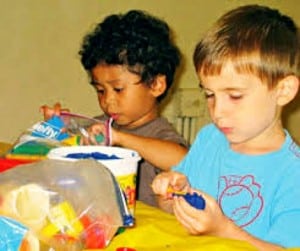
Seventy-four eight-year-olds participated in the study. The children, in pairs of two boys and two girls, sat in front of a computer in a quiet room to play a game. Before playing the game, the experimenter introduced herself and asked the children to tell each other their names. The game featured an animated ball that bounced on both halves of the screen. The children pressed a button when the ball hit the floor. For some pairs of children, the ball bounced at the same time, so the children pressed their buttons simultaneously. For other pairs, the ball was not synchronized between the two sides, so the children pressed their buttons asynchronously.
The children who played the synchronized game had an increased sense of similarity and closeness immediately after the game. However, children who played the asynchronous version of the game did not report the same increase in connection.
“The important ingredient is joint synchronized activity—it is a form of collaboration where individuals perform the same movements at the same time,” explained Tal-Chen Rabinowitch, post-doctoral fellow at the Institute for Learning & Brain Sciences at the University of Washington. “Synchrony is like a glue that brings people together—it’s a magical connector for people.”
The findings indicate that time-based activities like music, dance, or sports could help bring children together, potentially increasing empathy. This study may offer one method for increasing pro-social behavior in children.
This research is published in the journal PLOS One.
Previous news in pediatric psychology



 © 2025 Unyte Health US Inc.
© 2025 Unyte Health US Inc.